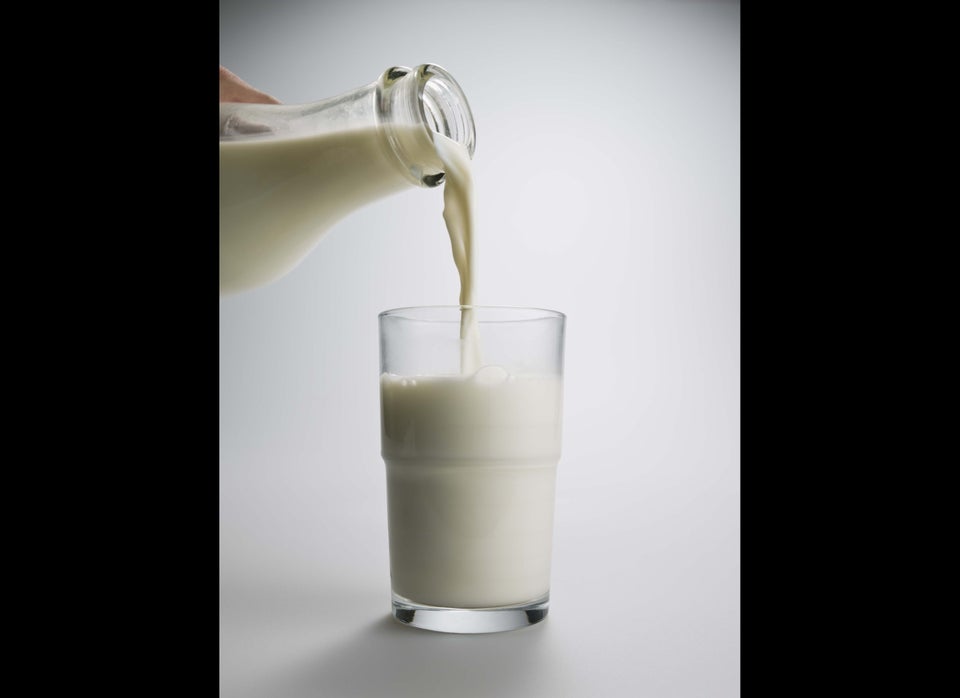
By Johannah Sakimura
Though “grains” and “flour” are dirty words for some health-focused eaters these days, evidence continues to mount supporting the health benefits of fiber-rich whole grains. New research published in the journal BMC Medicine found that older adults who consumed the most whole grains were 17 percent less likely to die from any cause during the study period compared to people who consumed minimal whole grains. When the researchers looked at specific causes of death, they found that the people with the highest whole grain intake were less likely to die from heart disease, cancer and diabetes compared to those with the lowest intake. Participants who ate the most whole grains led healthier lifestyles -- for example, they had a lower body weight and were more physically active -- but they were still found to have a lower risk of dying after taking these differences into account.
The study, which included more than 367,000 participants, also suggests that fiber may be the biggest contributor to whole grains’ protective effects. When the researchers also accounted for participants’ fiber intake from grains, the relationship between whole grain intake and risk of dying was no longer as strong.
The results mirror those of a large Harvard University study published earlier this year, which found that regularly eating high amounts of whole grains was associated with a 9 percent lower risk of death overall and a 15 percent lower risk of dying from heart disease.
While these types of observational studies have limitations and can’t prove that whole grains prevent deadly chronic diseases, they add to a growing body of research suggesting that “going whole” offers wide-ranging health benefits. Randomized controlled trials suggest that replacing refined grains with whole versions can lower blood pressure, improve blood sugar control, and possibly reduce cholesterol and curb damaging inflammation.
The Whole-Grain Hierarchy
However, food companies have learned to capitalize on whole grains as a health status symbol, which means there are now a whole lot of whole-grain impostors on the market. If you want to take advantage of whole grains’ nutritional perks, you need to choose wisely. There’s a big difference between a sugary breakfast cereal “made with whole grain” and a bowl of oats, bulgur or quinoa.
Top: Intact and minimally processed grains. Just as with vegetables, fruits and all other foods, the closer the grain is to its natural form, the more nutrient-dense it is. “Intact grains” (and pseudo-grains) contain the whole, unadulterated kernel or seed. Examples include wheat berries, brown rice, quinoa, popcorn, millet, amaranth and buckwheat groats (kasha). Minimally processed grains, such as steel-cut and old-fashioned rolled oats and bulgur, may be cut into smaller pieces, rolled or steamed, but still retain the vast majority of the intact grain’s nutritional wealth. Pearled grains, such as barley and most farro, are not technically whole grains because some or all of the bran is removed, but they’re still very high in fiber and other nutrients, so I consider them nearly on par with the other grains listed here.
Middle: Products made from 100 percent whole-grain flour are one step lower on the hierarchy. The milling process used to create flour reduces the micronutrient and antioxidant content of whole grains. It also makes them easier to digest, which means flour-based products generally raise blood sugar more quickly than intact grains. However, 100 percent whole-grain breads, pastas, tortillas and crackers are still a good source of fiber, and they’re straight up superstars compared to versions made with nutritionally-depleted white flour.
Bottom: Whole-grain baked goods and products that contain some whole grains. Near the bottom of the pyramid, I put whole-grain baked goods like cookies and other desserts. They may contain whole-grain flours, but they’re also high in added sugar and calories, both of which are already too plentiful in our diet. This bottom rung also includes processed foods that are “made with whole grains,” but contain primarily enriched (read: refined) white flour. To avoid these products, seek out items that clearly state “100-percent whole grain” or “100-percent whole wheat” on the package or list only whole grains on the ingredients list. If you’re a numbers person, you can also use the 10:1 rule to evaluate packaged foods with whole-grain claims. The richest sources of whole grains will contain at least 1 gram of fiber for every 10 grams of carbohydrate. Original Cheerios and Triscuits pass the 10:1 test; Cocoa Puffs and “Made with 5 g Whole Grain” Cheez-Its don’t.
The Easiest Way to Cook Whole Grains
If you’re not familiar with cooking certain grains, or you think you don’t have the time, I have two words for you: rice cooker. As long as you use the proper ratio of water to grain (which you can easily find on the package or the web), this method is nearly foolproof. Just power on the machine and it will automatically turn off when it’s done -- no monitoring necessary. I use my rice cooker to make big pots of quinoa and bulgur, along with the typical brown rice and they all come out perfectly fluffy.
Once you have a batch of cooked grains tucked away in the fridge, you can get creative. Add variety by choosing a different grain as your base each week. There’s a whole world of possibilities on how to enjoy them! Here are a few of my favorites:
- Mix with milk, nuts and fruit and microwave for a warm breakfast porridge.
- Layer with yogurt and fresh fruit for a parfait.
- Combine with beans and chopped veggies and a light dressing for a tasty entrée grain salad served warm or cold.
- Toss with toasted nuts and herbs or mixed roasted vegetables for a simple side dish at dinner
This Pantry Staple May Add Years To Your Life originally appeared on Everyday Health.

